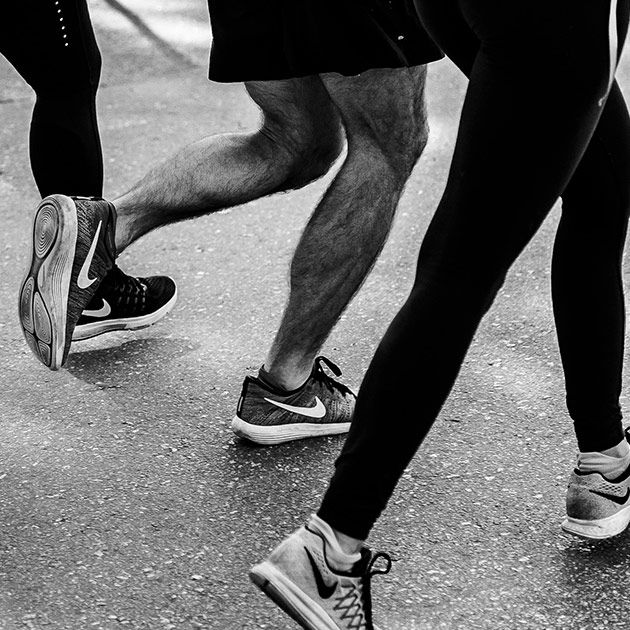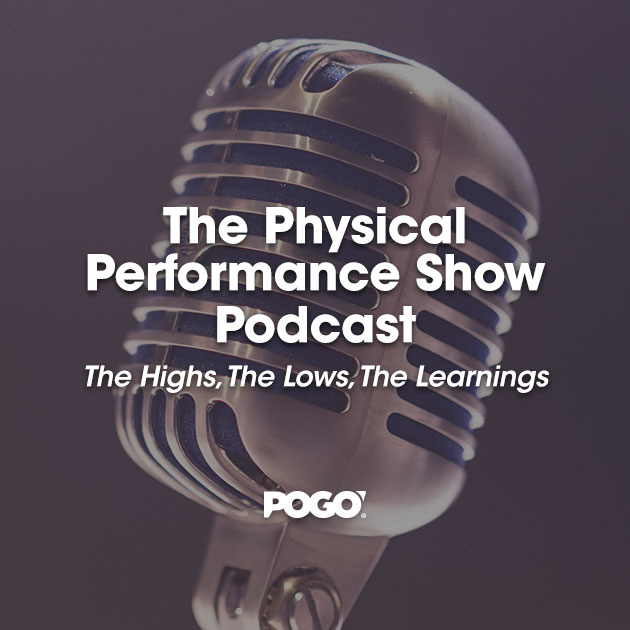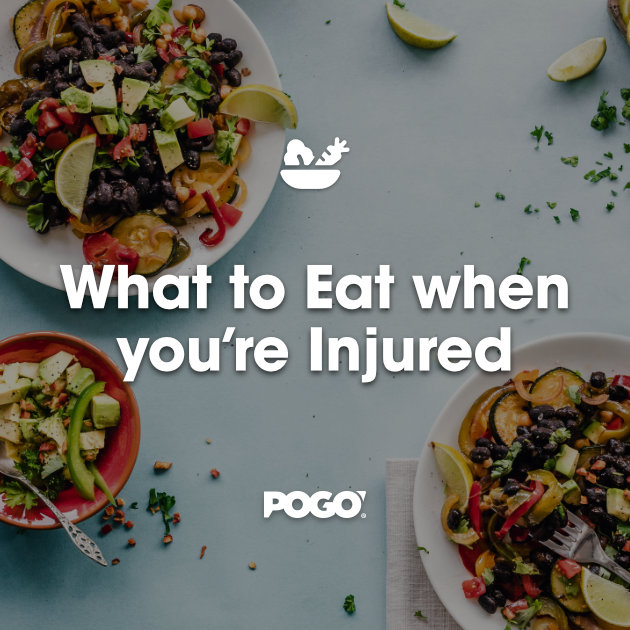Training Recommendations for Triathletes to Minimise Injuries
My professional observations
I have just returned from the Super League Triathlon in Europe, Malta and Mallorca. The Super League Triathlon series features ‘formula 1’ sprint racing across challenging courses. The event features the world’s best professionals racing at maximum effort across varying race formats including ‘the triple mix’, ‘sprint enduro’, and ‘the eliminator’.
I acted as the head physiotherapist across the Series. As a result I am exposed to the niggles, strains, and injuries that the athletes are experiencing.
The frank injury (impeded ability to race or train) ’stocktake’ across two weeks of back to back weekend racing, and training in between included: navicular bone stress injury, plantar fasciitis (fasciopathy), osteitis pubis, hip flexor myotendinous strain, and patellofemoral (knee cap) pain.
‘Niggles’ that required to be managed (i.e. did not impede on ability to train at desired levels or race) included: ITB syndrome, neck strain, lower back pain, sub-acromial shoulder syndrome ,proximal hamstring tendinopathy, patellar and achilles tendinopathy.
There were also some skin lesions from bike and run falls that required observation and wind management.
In addition to the above recent exposure to professional triathletes I have treated many triathletes over my 12 years in clinical practice. My observations over this time being that injuries to the foot, tibia , knee, and lower back would rank as most commonly treated.
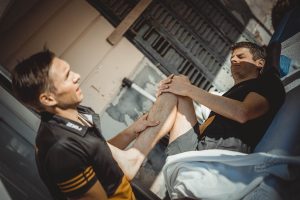

My own triathlon injury experience
In addition to my professional experiences I competed in triathlon from the age of 11yrs-21yrs, and then again from the age of 31-34yrs. In both phases of active triathlon training and competition I incurred frank injuries and also had niggles to regularly contend with. These included: patellofemoral pain, lower back pain, neck strain, patellar and achilles tendinopathy and tibial stress injuries.
The prevalence for running related injuries in the literature has been reported to be between 20 and 95%. With my personal and professional experiences I was interested to learn what the scientific literature reported the prevalence of injury in triathlon to be.
The scientific literature: rate of injury amongst triathletes
Studies looking at the rate of injury among Ironman distance triathletes indicate that injuries are common.
A review of research papers studied (1) that looked at the rate of injury amongst triathletes reported the below findings from various papers:
- In one prospective study of 174 athletes 87% suffered from some form of overuse injury over a 26-wk training period
- Another retrospective study of triathletes competing at all distances found that 62% had at least one injury in the past season
- In a retrospective study of 656 participants in Ironman Europe, almost 75% reported at least one injury since starting triathlons
- One of the lowest injury rates reported is 37%. This study looked at athletes competing in all distances and only took place over an 8-wk training period
- A similar rate (36.8%) was seen in a small cohort (18 male athletes) of Ironman distance triathletes on the British National Squad in a retrospective study of self reported injury in the past year
- One of the highest rates of injury was found by researchers who surveyed Ironman Hawaii participants. Ninety-one self-reported sustaining at least one injury in the past year. Additionally, the average number of injuries reported for an individual athlete was 2.9.
Difference in injury rates among these studies could be attributed to variations in study design including length of time athletes were followed or the distance of the race in which they were competing. Differences in reported rates of injury can also be attributed to the definition of injury varying between papers, and also the differences in accounting for a new injury as opposed to an exacerbation or ‘flare up’ of a previous injury. Most studies were also retrospective by design meaning that participants were subject to potential erroneous recall bias.
Where do triathletes get injured?
In addition to reporting on the varying overall prevalence found for triathlon injuries the review paper (1) also reported on the site of injury.
Findings were as follows:
- the most common site of injury was the lower extremity (with ankle and foot problems more common than injuries to the knee)
- back pain was the most common injury reported in a group of Ironman Hawaii finishers
- Hamstring, calf, and knee injuries were most commonly attributed to running.
- Achilles injuries and low-back injuries were most commonly attributed to cycling (44).
Which discipline (swim, bike, run) causes more injury?
In an effort to better understand injury patterns in triathletes studies have looked at which of the three individual triathlon disciplines (swim, bike, run) athletes reported sustaining the most injuries from. These findings were reported in the review paper (1) as follows:
- Ironman competitors reported the most injuries during cycling.
- Amongst triathletes competing in a range of all triathlon distances cycling & running had similar injury rates, at 43% and 50% respectively, with a much lower injury rate of 7% reported in swimming.
- Other studies have found that running results in the most injuries despite the fact that athletes spend the most training time cycling.
- A group of researchers found that the majority of injuries were reported during running both in preseason and in competition season among a group of Australian athletes. Similarly, most knee injuries were attributed to running.
- Another group of researchers found 65% of injuries among 155 British triathletes occurred during running.
It should however be noted that given that triathletes train for swimming, cycling, and running simultaneously it may not be accurate to attribute injury to a specific one of the three events.
Factors associated with increased risk of injury
Identifying factors associated with increased risk for injury is important to guide recommendations for injury prevention.
Findings are however mixed.
Here’s what the review of the literature found:
- Across all triathlon distances there was no association between sex, age, and physical characteristics (such as height, weight, and body mass index) and injury incidence.
- There was no association between competitive distance or difference between recreational or elite athletes and injury incidence.
- One study reported that there was no association between weekly total training distance, training time, or the number of weekly workouts and injury incidence over an 8-wk study period.
- In a group of athletes who participated in the Ironman World Triathlon Championships in Hawaii, training distance per week, average training pace, and average training time per week were not associated with injury risk.
- Among a group of 35 male Olympic and Ironman distance triathletes on the Great Britain National Squad, running injuries were found to correlate with total run training time in the week before starting to taper for their National Championship over a 5-yr study period.
- Overuse injuries in the Ironman distance athletes also were found to correlate with the amount of time spent on speed training. In particular, Achilles tendon injuries were correlated with the distance covered running hills and negatively correlated with time spent on long runs. Low back injury also was associated with time spent on speed cycling.
These results suggest that athletes should limit speed work close to a race and instead focus on distance at a more moderate pace.
On interesting paper (2) comprised of 258 triathletes of all levels found a ‘sweet spot’ of training hours:
- Athletes training 8 to 10 hours per week on average over 3 yr were found to have the lowest percentage of injuries.
- Athletes training less than 8 or more than 15 hours per week had a statistically significantly increased injury risk.
They also found that an intermediate time spent training for running and cycling individually also was associated with the lowest risk of injury, while time spent swimming was not associated with injury.
Recommendations
The current research on injuries in triathletes has been focused mostly on the prevalence of injuries. This leaves a gap for triathletes looking for guidance on injury risk and most importantly, injury prevention as they train and compete. Recent research in training and injury risk in other sports and in athletes in general can provide some guidance.
The below recommendations may be helpful for triathletes to keep in mind with regards to reducing injury risk:
- be wary of total run training time 1 week before starting to taper (correlated with run injuries)
- be wary of total amount of time spent speed training (correlated with overuse injury for Ironman distances)
- be wary of distance covered running hills (correlated with achilles tendon injuries)
- time spent on long runs may be protective against achilles tendon injuries
- be wary of time spent speed cycling (correlated with low back injury)
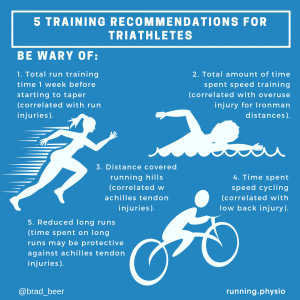
Physio With a Finish Line®,

Brad Beer (APAM)
Physiotherapist (APAM)
Author ‘You CAN Run Pain Free!’
Founder POGO Physio
Host The Physical Performance Show
Featured in the Top 50 Physical Therapy Blog
References:
(1) Triathlon Injuries: Transitioning from Prevalence to Prediction and Prevention. Kienstra, Carolyn M. MD1; Asken, Tristen R. PT, DPT, CSCS2; Garcia, Jennifer D. PT, DPT, MTC2; Lara, Vanessa MS, ATC, LAT3; Best, Thomas M. MD, PhD4. Current Sports Medicine Reports: November/December 2017 – Volume 16 – Issue 6 – p 397–403
(2) Shaw T, Howat P, Trainor M, Maycock B. Training patterns and sports injuries in triathletes. J. Sci. Med. Sport. 2004; 7:446Y50.




